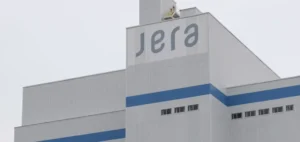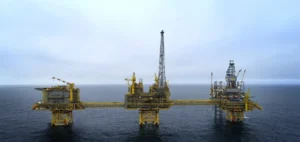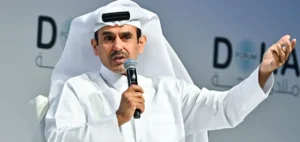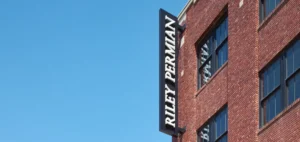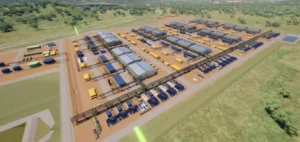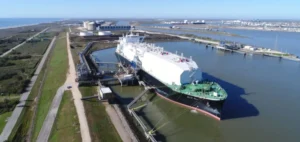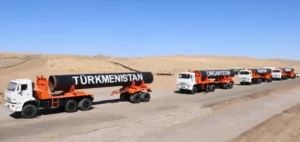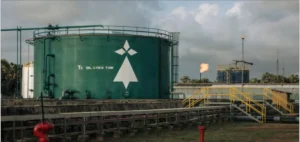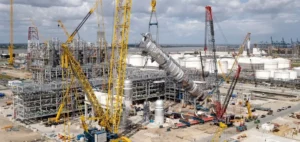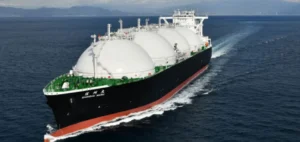The latest outlook from the International Energy Agency (IEA, Agence internationale de l’énergie — AIE) sets out an unprecedented ramp-up of LNG, driven by firm investment decisions and a project pipeline already underway. The foundation rests on added liquefaction capacity and progressive ramp-ups across several basins. The market remains steered by trade-offs between security of supply, marginal cost and logistical availability. Trade balances are shifting toward greater flexibility, supported by more modular contracts and strengthened liquidity.
Capacity and industrial timeline
The IEA counts around 300 billion cubic meters (bcm) per year of new LNG export capacity by 2030, primarily in the United States and Qatar. Accounting for declines and actual ramp-ups, the net potential increase in available LNG supply stands near 250 bcm per year. Final investment decisions (FID, décision finale d’investissement — DFI) have reached a peak in the U.S. segment, with more than 80 bcm per year sanctioned in the current period. This pace concentrates the next supply wave in a few hubs while shifting a greater share of security of supply onto the LNG fleet and regasification terminals.
The rise in supply exerts statistical downward pressure on spot differentials across basins. Narrowing spreads reduce the intensity of opportunistic arbitrage and favor more stable procurement strategies for players exposed to the short term. Price effects will nevertheless depend on the phasing of start-ups, scheduled maintenance and vessel availability. Reallocations of flows relative to long-distance pipeline links are expected to continue, reinforcing LNG’s role in interregional balancing.
Demand trajectories and price elasticity
The IEA’s base case anticipates average gas demand growth close to 1.5% per year through 2030, or about 380 bcm in additional volume. Asia-Pacific would capture nearly half of this increase, with heterogeneous paths depending on power mixes and downstream infrastructure availability. The Middle East would contribute close to 30% of the growth, supported by fuel-to-gas switching in power generation. In the near term, global growth slows below 1%, reflecting still-elevated price levels and industrial adjustments.
The high case explores the impact of a steeper decline in LNG prices on regional elasticity, adding more than 65 bcm per year by 2030 compared with the base case. This sensitivity is particularly marked in emerging Asia, where LNG’s relative competitiveness versus coal and oil conditions utilization at importing power plants. Realizing this trajectory assumes adapted domestic networks and coherent tariff frameworks. Exchange-rate and credit risks remain determining parameters for buyers indexed to international hubs.
Contracts, indexations and liquidity
The share of destination-free contracts should slightly exceed half of contracted volumes by 2030. This evolution enhances cargo fungibility and facilitates redirection according to price signals. Hub-linked and hybrid indexation formulas are gaining ground at the expense of oil-only indexation, widening hedging options. The rise of portfolio players increases commercial optionality and the depth of the secondary market.
Contract tenors have remained predominantly long since 2022, combining project bankability with buyer visibility. Volume-flex and resale clauses, coupled with diversified indexations, support risk management. This framework does not eliminate the risk of mismatch between project finance timelines and commercial optimization behavior, monitored by lenders and balance traders.
Costs, financing and integration of capture
Carbon capture, utilization and storage (CCUS, captage, utilisation et stockage du carbone — CSC) is advancing in upstream and liquefaction to reduce Scope 1 and 2 emissions intensity. Capture modules and transport–storage infrastructure are being integrated at existing and upcoming sites, with cost trajectories dependent on scale effects and storage reservoir availability. CCUS integration can influence financing access and the bankability of long-term contracts in demanding jurisdictions.
Low-emissions gases — biomethane, low-emissions hydrogen and e-methane — are accelerating but retain a limited relative size by 2030. Their volumes do not supplant LNG’s volumetric role in interregional balancing. LNG’s centrality remains within the security–cost–flexibility triad, with growing importance for logistical strategies and hedging tools. Risk parameters include industrial timelines, geopolitical tensions and price trajectories, as well as the availability of qualified labor.




